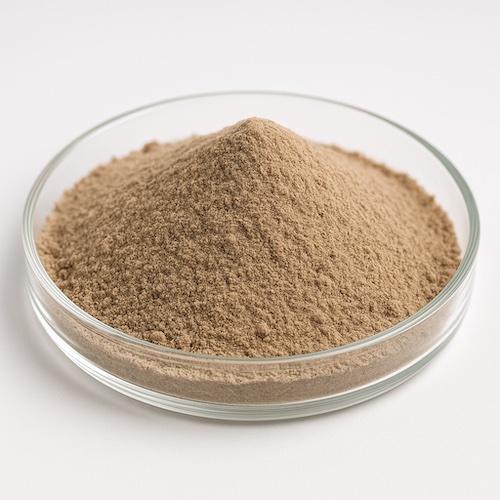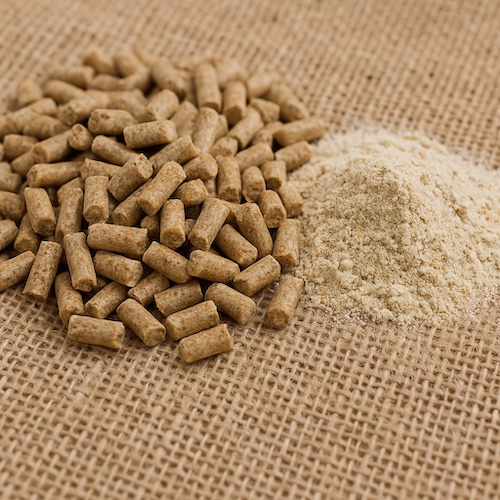Coccidiosis is the most common protozoan disease in poultry and other birds. The cause of this disease is intestinal parasites of the genus Eimeria. This article briefly discusses the methods of treatment and prevention of this disease. Stay with us.
Introduction
One of the most important symptoms of coccidiosis is the presence of blood in the feces of chickens. This disease is transmitted rapidly and is characterized by extensive damage to the intestinal mucosa, enteritis, necrosis, and bloody diarrhea, along with clinical symptoms such as ruffled feathers, drowsiness, anemia, and reduced head size in poultry. The annual economic losses caused by this parasite in the poultry industry are immeasurable.
Fully industrialized poultry farming has reduced the spread of the Eimeria parasite in poultry farms. The pathogenicity of this parasite depends on the genetic conditions of the host, anti-nutritional factors, concomitant diseases, mycotoxin contamination, and the age of the host. Coccidiosis is usually more prevalent in young and growing birds and susceptible adult birds.
The life cycle of Eimeria
The Eimeria parasite has three very complex sexual and asexual development stages (sporogony, schizogony, and gametogony). After the maturation of Eimeria (oocysts), its life cycle begins. Oocysts excreted in poultry feces form spores in a suitable environment (humidity, proper oxygen, and an optimal temperature of 25-30 degrees Celsius) within a period of 1-2 days and have different survival periods depending on the environmental conditions.
Outbreak of coccidiosis in poultry
Oocysts are almost universally present in all poultry farms, but they are not infectious until they form spores. After being swallowed by poultry, Eimeria parasite mature into sporulated oocysts and multiply in the mucous layers of the intestinal epithelium, causing inflammation, bleeding, diarrhea, and potentially death.
According to the life cycle of the oocyst depicted in the picture above, each infectious oocyst consists of four sporocysts, and each sporocyst also contains two sporozoites. Bile salts and chymotrypsin in the digestive system stimulate the sporozoites to attack the intestinal cells and cause to initiate their asexual and sexual growth. Consequently, thousands of new oocysts are produced in the host’s intestine, and these oocysts are then spread through poultry feces. The life cycle of Eimeria parasites lasts for 4 to 7 days. To enhance the immunity of flocks against coccidiosis, this parasitic life cycle must be repeated 2-3 times within the poultry body.
Oocysts exist in the bedding and poultry house, and they are spread through clothes, shoes, dust, insects, etc., leading to contamination of the bedding, feed, and water. Once swallowed by other farm chickens, the oocysts cause the spread of coccidiosis disease in the poultry farm, ultimately resulting in decreased bird performance, weakened immune systems, stunted growth, and increased drug consumption. Coccidia have specific hosts and are not transmitted between different species of poultry.
Prevention methods of coccidiosis in poultry farms
The most important line of defense to prevent coccidiosis is to create a safe and completely hygienic environment in the poultry farm. Oocysts are resistant to some disinfectants, but they are destroyed by freezing or high ambient temperature. Depending on the type of poultry productivity, the methods of controlling and treating coccidiosis is different. Among the methods of dealing with this disease are vaccination, coccidiostats, probiotics, multivitamins, use of insecticides, identification and treatment of sick birds, separation of multi-age flocks, which in general increases biological security between flocks and employees.
Anti-coccidiosis drugs and vaccines
When poultry are affected by coccidiosis, the use of vaccines and drugs can largely prevent the economic losses of the herd. The important point in this context is that Eimeria parasites have different species. Therefore, when choosing anti-coccidiosis compounds, attention should be paid to their diversity. In general, administering anti-coccidiosis vaccines at the age of 7 to 10 days in chicken farms can increase the flock’s immunity to this disease. Based on the prevalent parasitic species in the region and consultation with the herd veterinarian, the most appropriate combination should be selected.
The role of compounds that improve the digestive system (probiotics, toxin binders, and acidifiers) in coccidiosis
When the Eimeria parasite affects the intestines and causes damage to the intestinal wall, it is recommended to use multivitamins and probiotics to alter the microbial flora of the intestine in addition to administering anti-coccidiosis compounds. Therefore, using probiotic compounds can increase the dominant population of beneficial bacteria in the digestive system and help prevent intestinal inflammation.
Mycotoxins, such as fumonisin and deoxynivalenol, affect the bird’s digestive system, creating a suitable environment for the growth of pathogens like Eimeria, Clostridium, and E. coli. Therefore, during coccidiosis, feed mycotoxins exacerbate this disease, even at permitted levels. Poultry breeders can control feed contamination by using quality inputs, feed disinfectant compounds, and toxin binders when dealing with this disease.
When poultry is affected by coccidiosis, the destruction of the intestinal wall tissue reduces the digestion and absorption of feed, while increasing the population of harmful bacteria in the digestive tract. Additionally, apart from the involvement of the gastrointestinal tract by Eimeria parasites, there is an increase in the dominant population of gastrointestinal pathogens. Another method to address the exacerbation of this disease is to utilize acidifier compounds due to their antibacterial properties, which enhance the digestion and absorption of feed. By lowering the pH of the digestive tract, organic acids inhibit the growth of harmful bacteria and stimulate the secretion of digestive enzymes.




